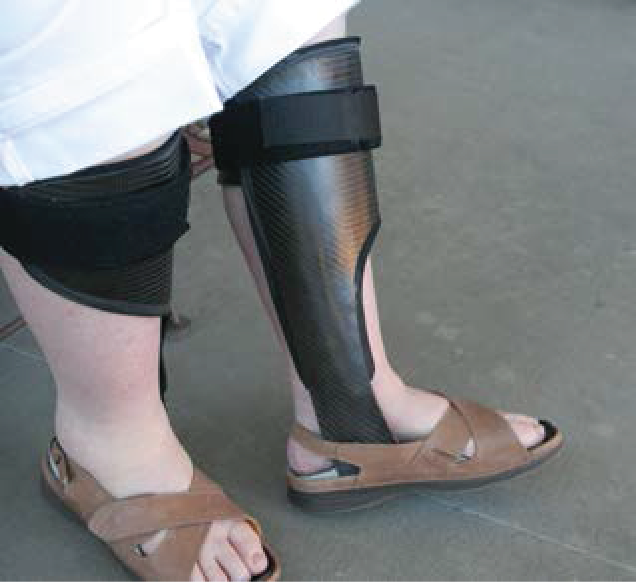Diane Covington: AFOs positively impact every aspect of her dynamic life
It’s a happy coincidence that Diane Covington lives just a few miles from a New Balance store, for two reasons. The brand’s sporty and comfortable styles are perfectly suited for Covington’s life on the go. And they come in widths that can accommodate the ankle foot orthoses (AFOs) that make her active lifestyle possible.

By Jordana Bieze Foster, Lower Extremity Review May 2015
Covington, 59, was diagnosed with Charcot-Marie-Tooth (CMT) disease 30 years ago, after coworkers’ comments about her limping gait prompted her to see a neurologist. Later, when blood testing for CMT had become more widely available, her subtype was identified as CMT2A—and, in retrospect, she believes her father and paternal grandmother likely had CMT as well. The oldest of Covington’s three adult children has also been clinically diagnosed with CMT.
 Covington’s symptoms include impaired balance, muscle weakness, and diminished sensation in her extremities. But, like many people with CMT, Covington was reluctant to try AFOs until her symptoms had deteriorated to the point at which she could not stand unassisted and became fatigued after 15 minutes of shopping at the mall. That was nine years ago. Now, she wears her Custom Composite AFOs literally from when she wakes up until she goes to sleep (except when bathing), and she wishes she had embraced the idea earlier.
Covington’s symptoms include impaired balance, muscle weakness, and diminished sensation in her extremities. But, like many people with CMT, Covington was reluctant to try AFOs until her symptoms had deteriorated to the point at which she could not stand unassisted and became fatigued after 15 minutes of shopping at the mall. That was nine years ago. Now, she wears her Custom Composite AFOs literally from when she wakes up until she goes to sleep (except when bathing), and she wishes she had embraced the idea earlier.
“I can now stand up by myself in the middle of a room,” Covington said. “That doesn’t sound like a big feat, but before I would have had to hold onto something in order to stand. I really would not be able to leave the house safely without them.”
To be sure, finding the right pair of AFOs has been a process. Covington estimates she has tried 10 different pairs of AFOs and seen at least three orthotists, and not just because she and Steiner relocated to Idaho from Colorado last year. Some designs were uncomfortable, some were not durable enough, and some were too wide to fit in any conventional footwear. It took about six years to finally find her AFO soulmates.

Jordana Bieze Foster photo Lower Extremity Review
“I would also tell people with CMT to not be shy about changing orthotists if the two of you are not on the same wavelength,” Covington said. “Find someone who understands CMT, because not everyone does.”
Over time, Covington has become more comfortable disclosing her condition to others—something that was particularly challenging when she reentered the dating world several years ago as a divorcee. Steiner has convinced her that in hot weather it makes sense to wear shorts, but typically she still prefers long pants over skirts or capris and lace-up shoes over sandals for better AFO camouflage.
“I can verbalize about the AFOs, but showing them off is another thing,” she said.
In addition to her lower extremity issues, Covington also has diminished sensation in her fingers, but that hasn’t stopped her from typing, quilting, and creating glass mosaics.
“I’m not at the point where I feel deprived because I have CMT,” she said. “I’m just grateful that I’m almost sixty and it really hasn’t impacted my life too much.”
| Story and Photos By Jordana Bieze Foster |
Source Lower Extremity Review
